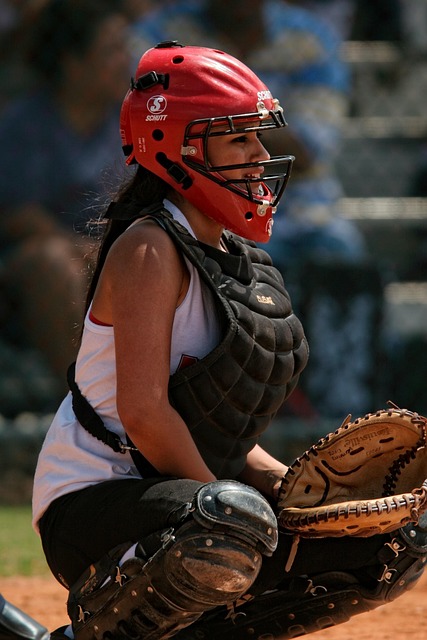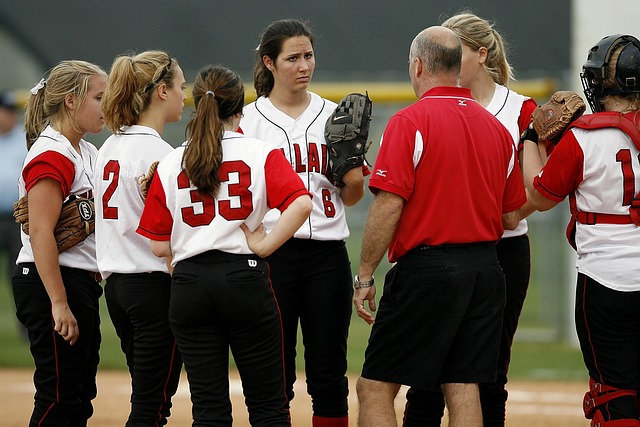Pre-season training for NCAA softball programs is a multi-faceted period focusing on holistic preparation. This includes physical conditioning through strength training, dynamic stretching, and injury prevention exercises, as well as strategic planning with goal-setting, skill development through drills and scrimmages, and mental conditioning using visualization and team-building activities. The ultimate aim is to optimize athletic abilities, refine skills, enhance communication, and foster a supportive environment, ensuring NCAA softball teams are ready to excel in the demanding regular season.
In the competitive landscape of NCAA softball, a successful pre-season is paramount. This guide explores integral tactics for Ducks softball teams, offering insights into optimal preparation. From understanding the unique training demands to implementing strategic goals and enhancing mental resilience, each aspect contributes to peak performance. We delve into physical conditioning methods that mitigate injury risks while highlighting skill development drills proven to sharpen play. Additionally, we emphasize team bonding activities fostering camaraderie essential for on-field unity.
- Understanding Pre-Season Training for NCAA Softball Programs
- Setting Goals and Strategies for Team Success
- Physical Conditioning and Injury Prevention Tactics
- Skill Development Drills and Scrimmages
- Mental Preparation and Team Bonding Activities
Understanding Pre-Season Training for NCAA Softball Programs

Pre-season training for NCAA softball programs is a critical period that sets the stage for the upcoming season’s success. It involves a combination of physical conditioning, skill development, and strategic preparation to ensure players are at their peak performance when competition commences. During this time, coaches implement various tactics to build a strong foundation for their teams’ on-field prowess.
The primary focus often includes enhancing athletic abilities such as speed, agility, and power through rigorous workouts and drills. Additionally, coaches refine fundamental softball skills like throwing, catching, batting, and base running. Team strategies are also honed, with practices designed to improve communication, tactical awareness, and overall team cohesion. This preparation is vital for NCAA softball teams, as it enables them to compete at a high level and adapt quickly during the demanding regular season.
Setting Goals and Strategies for Team Success

In the build-up to the season, setting clear goals and strategies is paramount for any NCAA softball program aiming for success. Coaches play a pivotal role in establishing these objectives, which often involve winning specific tournaments or achieving certain wins against rival teams. These targets are then broken down into actionable plans, focusing on areas like improving batting averages, refining pitching techniques, and enhancing defensive coordination.
The Ducks softball team, for instance, might aim to boost their overall offensive productivity by implementing new hitting drills during pre-season practices. They could also strategize to minimize errors in the field through intensive training sessions. By setting such goals and executing tailored strategies, NCAA softball programs prepare themselves not just physically but mentally, ensuring they’re ready to face any challenge that comes their way.
Physical Conditioning and Injury Prevention Tactics

In the competitive landscape of NCAA softball, pre-season training is paramount for success. Physical conditioning plays a crucial role in preparing Ducks softball players for the rigors of the season ahead. Programs focus on a holistic approach that combines strength and conditioning exercises tailored to enhance throwing velocity, base running agility, and defensive responsiveness. This includes off-season lifting regimens designed to build muscular endurance and power, essential for consistent performance throughout lengthy games and tournaments.
Injury prevention is another key facet of pre-season tactics. Coaches employ dynamic stretching routines and mobility exercises to reduce the risk of overuse injuries commonly affecting pitchers and position players. Additionally, educational sessions on proper throwing mechanics and equipment fitting help players understand how to avoid injuries while maximizing their athletic potential. These measures reflect a strategic commitment by NCAA softball programs to foster both peak physical condition and long-term player health.
Skill Development Drills and Scrimmages

In the build-up to the season, NCAA softball programs place significant emphasis on skill development through targeted drills and scrimmages. These practices are instrumental in refining players’ fundamental skills, such as throwing, hitting, and fielding, which are the backbone of successful performances. Coaches often design drills that isolate specific areas for improvement, allowing athletes to work on their weaknesses while building upon their strengths. Scrimmages, on the other hand, provide a more game-like environment where players can apply their honed skills under competitive conditions. This strategic approach ensures that teams are well-prepared to face off against formidable opponents once the regular season commences.
Mental Preparation and Team Bonding Activities

Mental preparation is a significant aspect of pre-season training for NCAA softball programs. Coaches often employ various strategies to fortify their players’ mental resilience and focus, including visualization exercises, positive affirmation techniques, and stress management workshops. These activities help athletes visualize success on the field, build confidence in their abilities, and prepare them for high-pressure game situations. By addressing both physical and psychological aspects of performance, teams aim to create a harmonious balance that translates into improved gameplay and better overall outcomes during the season.
Team bonding is another crucial element in pre-season routines for NCAA softball teams. On and off the field, players engage in activities designed to foster camaraderie and strengthen team dynamics. These can range from simple icebreakers and group discussions to more intricate team-building exercises that challenge communication and collaboration. Such activities promote a sense of unity among teammates, encourage open communication, and cultivate a supportive environment where each player feels valued and empowered to contribute. Effective team bonding sets the foundation for effective collaboration on and off the diamond during competitive games.






